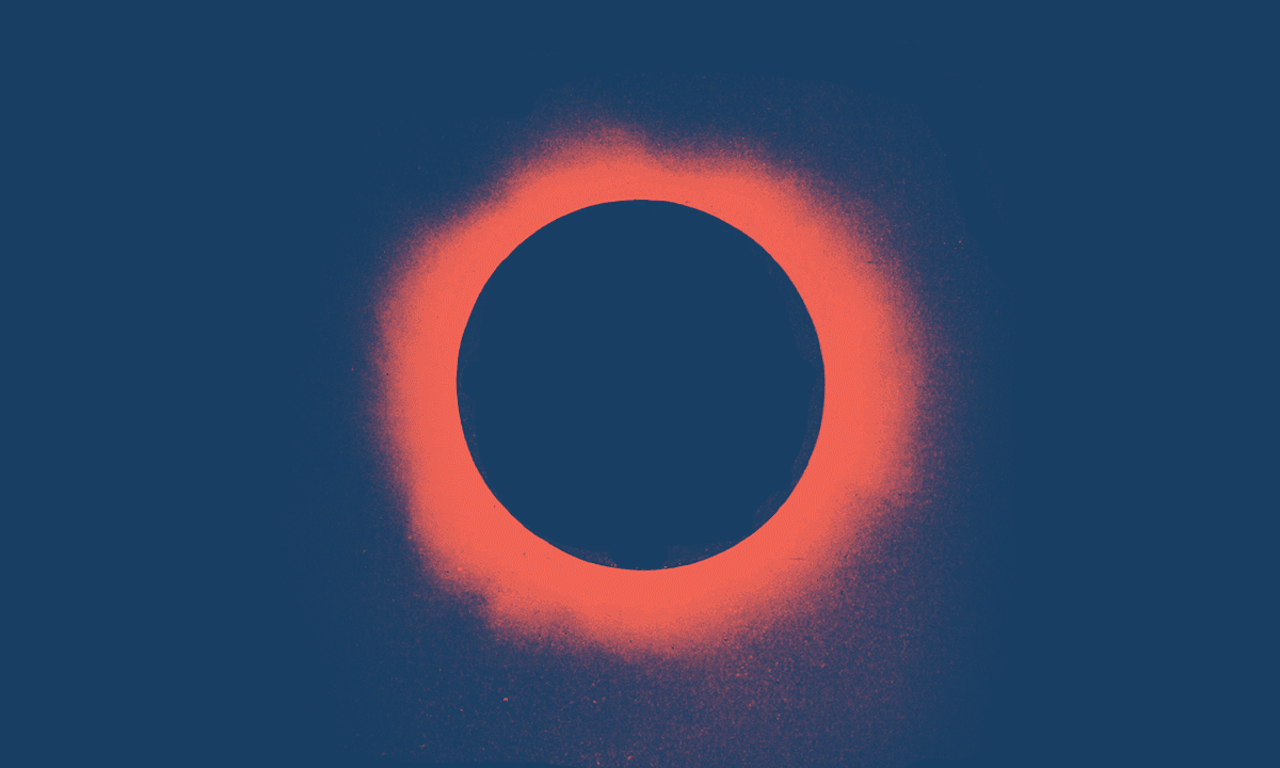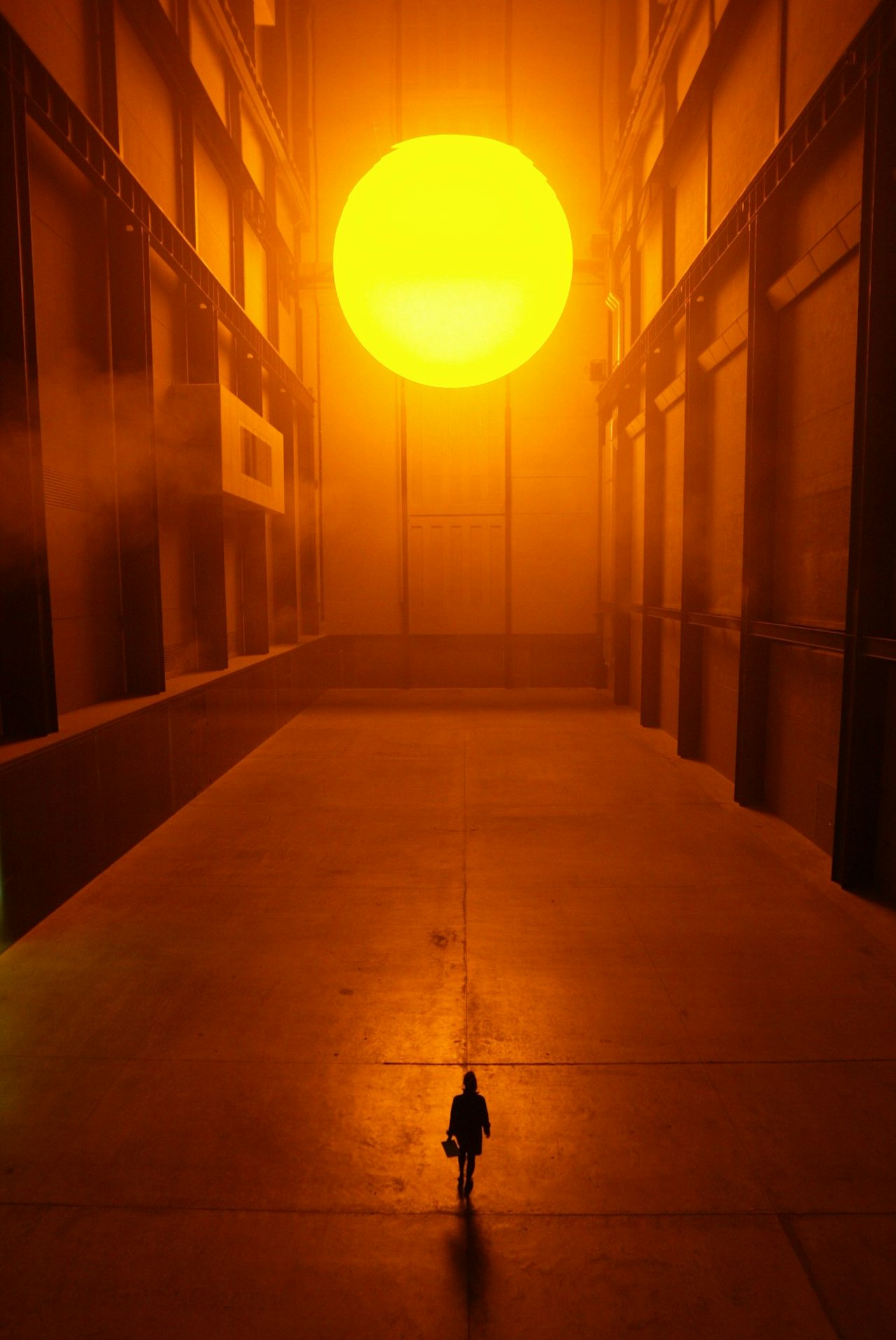Lovecraftian monsters really do exist. There are vast burning demons, things from far beyond our tiny world, things that you can’t even look at without going incurably mad. A being that is absolutely here but whose immenseness extends out into the cosmic distance of a fevered incomprehension. The ancients knew about it, all the way back to the grubby screaming infancy of the species. They killed in its name. Many of them even worshipped it. And then they all died, one after another, flashing into life and withering away again for tens of thousands of years — but it lived on. There are billions of these things. There’s one right there, up in the sky; it passes over our heads every day. The only way to stay sane under its light is to not look at it, to almost pretend that it doesn’t exist. All the old rites and superstitions that once warded off mystical evils have been condensed into one single command, so vast and monolithic we’ve forgotten that it’s even possible to disobey: Don’t look directly at the sun.
Not to look directly into the sun is (at a guess) one of the first lessons everyone is taught by their parents. As unquestioned ideological precepts go, it’s enormously effective. You learn it, you internalize it, and never really think of it again until you have kids of your own. And then you say it once more, repeating your parents’ words, and theirs, in an unbroken tradition going back God knows how many millennia. No, honey, never look directly into the sun.
Sungazing, with all its suggested Icarean hubris, is a crisis of common sense. The English writer G.K. Chesterton set one of his murder mysteries, The Eye of Horus, among a sun-worshipping cult. The unwitting victim lays out her dogma: “Why among the stars should there be one star I may not see? The sun is not my master, and I will open my eyes and stare at him whenever I choose.” The gaze hovers uncertainly near a kind of domination over the sun, something close to blasphemy. The Marquis de Sade knew it; as his Curval exclaims in The 120 Days of Sodom, “How many times, by God, have I not longed to be able to assail the sun, snatch it out of the universe, make a general darkness, or use that star to burn the world! Oh, that would be a crime.” A crime, even though there’s no punishment in any jurisdiction for extinguishing the sun; with its power, it creates a law all its own. The Simpsons’ own Mr. Burns echoes the sentiment: “Ever since the beginning of time, man has yearned to destroy the sun.” He’s not entirely wrong, but it’s madness; to stare into the sun is to abolish the entire celestial hierarchy, to destroy it and yourself and everyone else with you. But people do it. And our world is the better for it, because staring directly into the sun is our moral and political duty.
Sungazing, with all its suggested Icarean hubris, is a crisis of common sense.
Not that looking at the sun is without its obvious dangers. Short exposure to direct sunlight, even for a few seconds, can cause photokeratitis — essentially a sunburn on your eyes, with all the itching and burning you might remember from childhood holidays — on the cornea and conjunctiva, the eye’s transparent outer casing. Keep staring, and you’ll develop solar retinopathy. This is what causes the real damage, but it’s not actually caused by the sun itself. We’re at fault; it’s a result of the human body’s inability to fully comprehend the sun in all its terrible glory. Bright light floods the eyes, which become overstimulated. Before long, the tissues of the retina break apart. It’s a painless process that can result in blindness, sometimes permanently. Three-and-a-half billion years of evolution under a single unchanging sun, and life still hasn’t found a way to look at it, or safely contain its image. It’s still something violent and alien, a light too powerful to be seen.
That’s the science, but it might be more illuminating to consider the matter anthropologically. The command to not look directly into the sun is mirrored in what are termed “avoidance relationships” between humans: In general, it’s a mark of disrespect to look a social superior right in the face. Servants lower their gaze, and commoners bow before kings. In some Aboriginal Australian societies, as first documented by the 19th-century anthropologist A.W. Howitt, it’s expressly forbidden for you to make eye contact with your mother-in-law. The gaze, as psychoanalytical and feminist theory has long documented, is objectifying, and in certain circumstances pitiless. Anyone who remains under an unbroken gaze is reduced to an object of consciousness, something to be scrutinized as carelessly as if it were inanimate. It’s rude to stare. For the powerful, this is unacceptable: Power tends to position itself as a kind of universal subject. Tribes and states and corporations are the ones that think and do things, and while they engineer various spectacles, they’re not zoo animals to be passively observed.
This might be why the powerful throughout history have tried to associate themselves with the sun, the cosmic all-seeing eye whose gaze can never be met. All potentates are, to some extent, sun-kings. What’s more, it allowed them to connect the energetic and generative power of the sun, which tends the crops and gives all things life, with their own political power, the one that allows these parasitic rulers to seize the food from others and put any living thing to death. Egyptian pharaohs declared themselves to be living embodiments of the sun; the Incas decorated their temples with gold sun-discs; Louis XIV of France filled Versailles with solar imagery and was known as le Roi-Soleil. In Shakespeare’s Richard II, the king says of the traitor Bolingbroke that he “shall see us rising in our throne, the East / his treasons will sit blushing in his face / not able to endure the sight of day / but self-affrighted tremble at his sin.” Even the Nazi swastika has its roots in the sun-cross used by prehistoric religions. It’s not an accident that, on the coronation of Queen Elizabeth II, her crown was aligned with the cardinal directions, and the officiating archbishop prayed that her throne “may stand fast in righteousness for evermore, like the sun before her.” Is it any surprise that Donald Trump builds towers that reach up to the blasphemous stratospheres, or that he covers everything he owns in gold, the sun’s alchemical correspondent? The injunction not to look directly into the sun isn’t just medical — it’s always political.
But political commands have always had their dissenters, and very smart people have always been willing to do very stupid things. There’s a persistent legend that Galileo went blind after looking at the sun through his telescope. It’s not really true — his observations were all carried out around sunrise and sunset, and his later blindness was most likely unconnected — but there were other, braver people who did what he could only achieve in myth. In particular, sungazing seems to have been rife among the English, possibly because our sun is so weak that it’s much harder to imagine it doing us any harm. Galileo’s contemporary, the astronomer and mathematician Thomas Harriot, tried it out and made a phlegmatic report, noting that “my sight was after dim for an hour.” The 17th-century Oxford astronomer John Greaves offered a more illuminating account; for days after he looked at the sun, his scorched retinas showed him a different world, a sunscape inhabited by things that weren’t there. In those dark spots where the sun had burned itself into his vision, he perceived “a company of crows flying together in the air at a good distance. At the first, I did verily believe I saw a company of crows flying in the air.”
Harriot and Greaves were looking at the sun to study it — Harriot was searching for sunspots; Greaves was trying to measure its diameter. Some time around 1665, the great scientist and even greater occultist Isaac Newton stared directly into the sun to see what it would do to himself. His experiment was set up to produce the maximum retinal damage possible: He stood in a dark room to dilate his pupils and looked at the sun through an angled mirror, to observe the “phantasms” it left in his vision. What’s really striking about Newton’s experiment is that his conclusions were not astronomical or optical, but psychological. In a letter to John Locke some 20 years later, he described his recovery:
In a few hours time I had brought my eys to such a pass that I could look upon no bright object with either eye but I saw the sun before me, so that I durst neither write nor read but to recover the use of my eyes shut myself up in my chamber made dark for three days together & used all means to divert my imagination from the Sun. For if I thought upon him I presently saw his picture though I was in the dark. … For some months after the spectrum of the sun began to return as often as I began to meditate upon the phænomenon, even tho I lay in bed at midnight with my curtains drawn. But now I have been very well for many years, tho I am apt to think that if I durst venture my eyes I could still make the phantasm return by the power of my fansy.
When you look into the sun, it changes you; you carry a piece of it with you now; you have become a solar being, capable of conjuring up an 864,000 mile-wide burning star at will. No wonder the practice is so popular with cranks.
In the early 20th century, the quack optometrist William Bates encouraged his patients to stare at the sun through magnifying lenses as a treatment for myopia, claiming that its nourishing rays could help them achieve “Perfect Sight Without Glasses.” And to this day, there are others following in his footsteps. The New Age Breatharian movement, claiming a dubious descent from ancient Vedic practices but mostly active since the 1990s, insists that the human body can sustain itself indefinitely without food or water through the sun’s cosmic benevolence. After all, plants get their energy from sunlight, and animals get theirs from plants — why bother trudging through the food chain when you can go directly to the source? Since we can’t eat the sun, Breatharians are content with looking at it. Over a terrifying array of websites, they detail the practice: For the first few months, you should only look at the sun for 10 seconds at a time, but as your eyes adjust, you can go for longer and longer periods. “If you can watch TV for three hours,” one author notes, “surely you can see the sun for that long.” The first effects are psychological: You will be cured of your depression, for instance. “You will become a compassionate person. This is a great contribution to world peace.” You will no longer fear death. After extended sungazing, all bodily illnesses will vanish. Finally, once you’ve learned to spend hours at a time disobeying your parents, you will be able to live without food, see across time and space, and fly under your own power, including into outer space. You will become a god.
And then, skipping ahead a few decades, there’s Tila Tequila. In October 2015, the disgraced former reality TV star wrote a short letter to her 3 million Facebook followers:
If you are able to look directly into the sun..... it's actually black! So crazy! Because I sunbathe a lot as well as sun gaze... then one day I noticed that the longer I stared directly into the sun, the darker it became. Then it was totally black and there was another sun Behind it!!! It was a pinkish color and some blue. But mostly the sun is black.
Staring at the sun as it gradually burned itself black, Tequila saw something others have seen before her. It’s not just flooded retinas (recall that Newton’s phantasmic sun was a circle of light). A 1996 study found that in drawings produced by child survivors of an Armenian earthquake, the scenes of “overwhelming death and destruction” often took place under the light of a black sun. This secondary sun, Sol niger, recurs throughout the history of thought and suffering. Carl Jung saw this sun shining in nature, as a “light of darkness” that burns away “all superfluities” leaving only “dross and scoriae and the rejected Earth.” The psychoanalyst and semiotician Julia Kristeva referred to her depression as a “black sun,” writing: “Where does this black sun come from? Out of what eerie galaxy do its invisible, lethargic rays reach me, pinning me down to the ground, to my bed, compelling me to silence, to renunciation?” But perhaps the most consistent advocate of the shadow-sun theory is the 20th-century philosopher and pornographer Georges Bataille. The sun of power and reason is a cosmic eye; his Jesuve is a solar anus, the “filthy parody of the torrid and blinding sun.” The black shit-smeared sun is an opposing principle to the restrictive forces of abstract rationality: It’s violence and excess; its rays don’t glitter, they penetrate, forming an “ignoble shaft” or “erection without escape and without rule.”
When you look into the sun, it changes you.
While Bataille admits a “human tendency to distinguish two suns,” those suns are not separate entities but different political approaches to a single object. The sun that symbolises order and rationality illuminates the world so long as you don’t look at it; once you do, it becomes an object of obscene violence. The Newton of mechanical laws and calculus was the same Newton who stared into his mirrored sun to capture its mystical energies. Remember the company of crows in Harriot’s sun-bleached world, the messengers of the underworld, here to feast on the astral dead. In the Platonist system, the sun is a metaphor for the Good, a principle of reason, justice, and understanding, the center of an ordered universe. In the same way that the light of the sun allows us to see the world of everyday physical objects, the light of the Good allows for (in Plato’s phrase) “the intelligibility of the objects of knowledge.” Bataille’s parodic sun is a direct challenge to that world; it’s what happens when solar reason is turned against itself, when instead of allowing its illumination to reveal a serene, peaceful world, we stare directly at its mad and burning source. It’s the sun Van Gogh painted, one of “radiation, explosion, flame, and himself, lost in ecstasy.”
Plato famously wanted a totalitarian society run by philosophers, in which ordinary people would live under the firm, rational, condescending guidance of those who had learned to see by the light of the Good. There’s always a kind of authoritarian undercurrent to rationalistic philosophy — take, for instance, Immanuel Kant. In What Is Enlightenment?, he argued that enlightened autocrats such as Frederick the Great of Prussia ought not to restrict the freedom of thought of his subjects, and that “freedom need not cause the least worry concerning public order or the unity of the community.” But this isn’t out of any respect for differences of opinion; instead, Kant takes it as axiomatic that Frederick’s rule is rational and that anyone sensibly using their freedom of thought will inevitably end up supporting it. Reason comes from the sun, and so does the king, and if there’s only one sun, neither can disagree with the other. Kant’s reason allows for only one right answer, and it happens to agree with political power. As he puts it: “Argue as much as you like, and about what you like — but obey!”
What Bataille advocates isn’t necessarily a collapse into pure unreason but an attempt to subject the highest powers to their own standards, to stare in the face of kings and monsters, and ask “why must you rule?” If you use reason to interrogate reason itself, it’s revealed as being utterly arbitrary. In other words, looking directly into the sun is an immanent and dialectical procedure, the source of a radically democratic mode of knowledge, and the only way to free humanity from oppression. It’s the highest crime, not because it’s forbidden by law, but because every unjust law depends on our refusal to stare into the sun. But we can break all injustice forever, at the small cost of losing our eyes.



